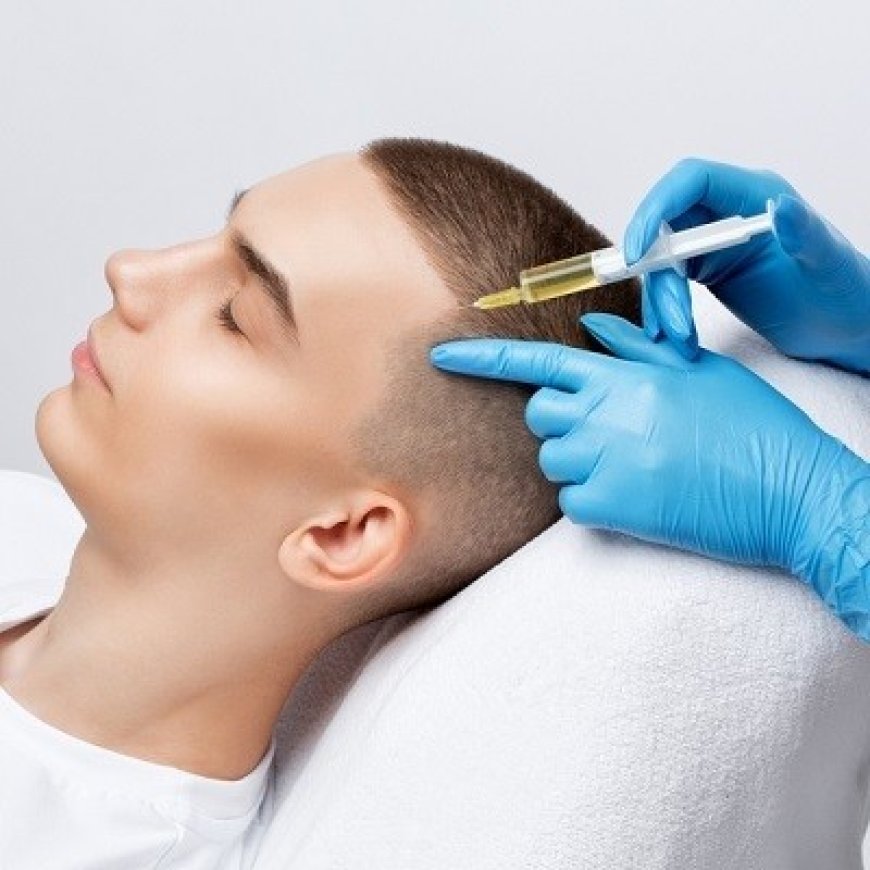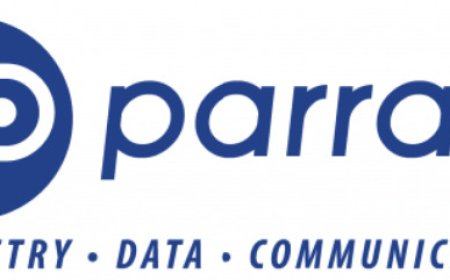Is PRP Covered by Insurance in Islamabad?
Platelet-Rich Plasma (PRP) therapy has rapidly gained popularity as a non-surgical treatment for a wide range of medical and aesthetic concerns

Platelet-Rich Plasma (PRP) therapy has rapidly gained popularity as a non-surgical treatment for a wide range of medical and aesthetic concerns. From hair restoration and skin rejuvenation to joint pain management, PRP therapy offers promising results with minimal downtime. However, one question that often arises among potential patients is whether PRP therapy is covered by insurance, especially in a place like Islamabad, where healthcare costs and access to advanced treatments can vary.
The short answer is that PRP therapy is typically not covered by insurance. While this may be disappointing for some, understanding the reasons behind this and exploring potential options can help you make informed decisions about your treatment options.
In this blog, we’ll explore the factors that influence whether PRP therapy is covered by insurance, discuss the circumstances under which it may be eligible for coverage, and offer guidance on how to manage the cost of PRP treatment in Islamabad.
Why PRP Therapy is Generally Not Covered by Insurance
1. PRP Therapy is Considered an Elective or Cosmetic Treatment
The primary reason PRP therapy is often not covered by insurance is that it is considered an elective or cosmetic procedure in many cases. Insurers typically provide coverage for medically necessary treatments, which are those that address a specific, diagnosed medical condition. However, when a treatment is considered cosmetic or optional—primarily aimed at improving appearance rather than treating a medical issue—it may not be covered under traditional insurance plans.
- Cosmetic Use: Many people seek PRP therapy for aesthetic reasons, such as hair restoration, skin rejuvenation, or acne scar treatment. Since these are cosmetic concerns rather than life-threatening medical conditions, insurance companies usually exclude these treatments from their coverage plans.
- Elective Procedures: PRP therapy for conditions like joint pain or injury may be seen as an elective procedure, especially when other conventional treatments are available. This can also contribute to its exclusion from insurance plans.
2. Limited Medical Acceptance for Some Indications
While PRP therapy has shown great promise in the treatment of various medical conditions, such as osteoarthritis, chronic tendon injuries, and hair loss, some medical insurance providers may still view it as a non-standard or experimental treatment. For instance, while some healthcare providers may endorse PRP for joint pain or tendon injuries, it might not be recognized as a first-line treatment by all insurance companies.
- Medical Acceptance: Although PRP has gained traction in the medical community, not all insurers agree on its effectiveness for certain conditions. For example, while there is substantial evidence supporting PRP’s effectiveness in healing soft tissue injuries or promoting hair regrowth, its use in areas like dermatology (for skin rejuvenation) is often regarded as investigational or experimental by many insurance companies.
- Off-Label Use: PRP therapy is sometimes used off-label for certain aesthetic or medical purposes that are not yet approved by regulatory bodies such as the FDA. As a result, insurance providers may hesitate to cover treatments that are not universally accepted or supported by strong clinical evidence.
3. Variability in Medical Insurance Plans
In Islamabad, as with many other regions, insurance coverage for medical procedures can vary widely depending on the specific health plan, the insurer, and the country’s healthcare regulations. While some insurance companies may offer limited coverage for specific medical conditions treated with PRP, most standard health insurance policies do not include coverage for elective, cosmetic, or experimental procedures like PRP.
- Private vs. Public Insurance: Public insurance plans in many countries, including Pakistan, often have strict limitations on the types of procedures they cover. Even private insurance policies may exclude PRP therapy unless it is deemed medically necessary for a condition explicitly covered by the plan.
When Might PRP Therapy Be Covered by Insurance?
Although PRP therapy is not typically covered for cosmetic purposes, there are certain situations in which insurance might cover the treatment, depending on the condition being treated and the specifics of the insurance plan. Here are some scenarios in which PRP may be covered or partially reimbursed:
1. Medical Treatment for Joint Pain or Soft Tissue Injuries
PRP therapy has gained recognition in the medical field for its ability to treat joint pain, tendon injuries, and soft tissue damage, particularly in conditions like osteoarthritis or tendinitis. In some cases, insurance providers may cover PRP if it is used as a treatment for a diagnosed medical condition that has not responded to other more traditional therapies, such as physical therapy or corticosteroid injections.
- What to Expect: If your PRP treatment is deemed medically necessary for conditions like chronic joint pain or ligament injuries, your insurance provider may cover part or all of the cost. However, this will depend on your insurance policy and the documentation provided by your healthcare provider regarding the medical necessity of the treatment.
2. Treatment for Hair Loss (in Some Cases)
PRP therapy has also been used to treat androgenic alopecia (pattern hair loss) in both men and women. In certain instances, health insurance providers may offer coverage for PRP if hair loss is linked to an underlying medical condition, such as alopecia areata (an autoimmune disorder causing hair loss), or if conventional treatments, like oral medications, have failed.
- What to Expect: If your hair loss is due to a medical condition and is documented by a healthcare professional, your insurance provider might cover the PRP therapy as part of a broader treatment plan for hair restoration.
3. Coverage Based on Insurance Plan Terms
Some highly specialized insurance plans, particularly those that focus on wellness, alternative medicine, or regenerative therapies, may offer coverage for PRP therapy as part of a broader wellness or rehabilitative treatment program. However, such coverage is typically rare and may come with specific requirements or restrictions.
- What to Expect: You will need to check the terms and conditions of your health insurance policy to see if PRP therapy is covered under your plan. You may also need to provide extensive documentation and medical justification from your healthcare provider.
How to Manage the Cost of PRP Therapy in Islamabad
Since PRP therapy is typically not covered by insurance, patients in Islamabad will need to explore alternative ways to manage the costs of treatment. Here are some strategies to consider:
1. Payment Plans and Financing Options
Many clinics offering PRP therapy in Islamabad provide flexible payment plans or financing options to help patients manage the cost of treatment. These plans allow you to pay for your treatment in installments over time, making it more affordable for those who do not have insurance coverage.
- What to Expect: Be sure to inquire about financing options before undergoing treatment. Some clinics may offer interest-free installment plans, while others may partner with third-party financing companies to provide extended payment options.
2. Look for Package Deals
Some clinics offer discounted rates for multiple PRP sessions, especially when you opt for a treatment package. This can be a more cost-effective way to undergo PRP therapy if you need multiple sessions, such as in the case of hair restoration or joint treatments.
- What to Expect: Ask the clinic if they offer package deals or promotional discounts for PRP therapy. These packages can help reduce the overall cost of treatment.
3. Explore Alternative Treatment Options
If PRP therapy is too expensive or not covered by your insurance, you may want to explore other treatment options that are more affordable or potentially covered by insurance. For example, medications, physical therapy, or corticosteroid injections may be alternatives to PRP for joint pain or tendon injuries.
- What to Expect: Discuss your treatment goals with your healthcare provider, who can suggest alternative options within your budget.
Conclusion
PRP therapy is a revolutionary treatment that offers promising results for various medical and aesthetic concerns, from hair restoration to joint pain relief. However, insurance coverage for PRP therapy is generally not available because it is considered an elective or cosmetic procedure in many cases. In some instances, insurance may cover PRP for medical treatments such as joint pain or hair loss due to underlying medical conditions.
To manage the cost of PRP therapy in Islamabad, patients should inquire about payment plans, financing options, and package deals offered by clinics. It’s also a good idea to discuss your treatment options with a healthcare provider to explore affordable alternatives if insurance coverage is not available.
What's Your Reaction?





















